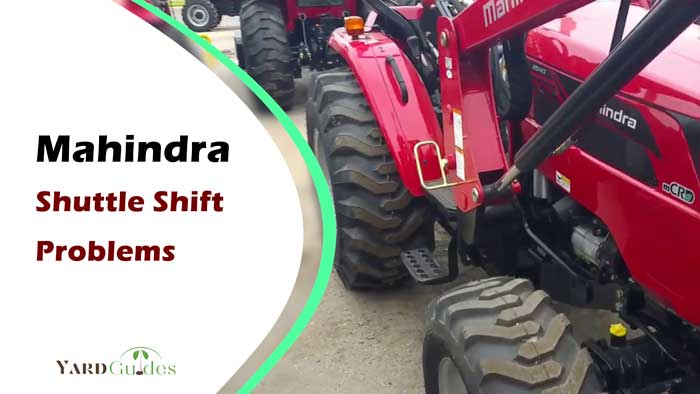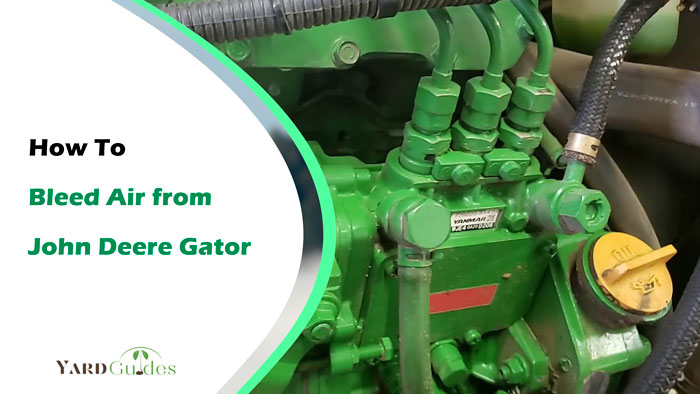The owners of Mahindra have dodged a lot of complaints regarding the shuttle shift. Despite being a famous tractor, the Mahindra has some annoying shuttle-shifting issues.
But what are the common Mahindra Shuttle shift problems? The common problems are-
- Grinding gears
- Unable to shift gears
- Clutch not engaging and disengaging
- Slipping gears
- Clinking gears
- Late response in shifting gears
You will get to learn how to fix shuttle shift problems, along with the causes in this article. Before getting one, read on till the end to get an idea about Shuttle shifting issues with their potential solutions in Mahindra tractors.
Quick Overview
The table below will discuss an overview of the problems and solutions of the Mahindra shuttle shift-
| Problems | Solutions |
| Grinding gears | Change the bearings |
| Unable to shift gear | Change the gear shift fork/add moderate level fluid |
| Clutch not engaging and disengaging | Clean and tighten the connections |
| Slipping gears | Replace the clutch/change the transmission fluid/change the pressure plate ring |
| Clinking gear | Re-fill the transmission fluid/change the bearings |
| Late response in shifting gears | Change the clutch/re-fill the fluid |
What Causes Mahindra Shuttle Shift Problems and How to Fix Them?
Let’s look at the in-depth discussion on problems, causes, and solutions.
1. Grinding gears
A bad bearing can cause a grinding problem during the shuttle shift. When the wheel bearing goes bad or is damaged, it will put an impact on the gears.
The wheel bearings may get worse when you take the vehicle through mud and dust.
Solution
In this case, you have to change the bearings. To change the bearing, follow the steps below –
- Step 1- Park your car on a plain surface
- Step 2- Put two fillers back of the wheels
- Step 3- Untighten the wheel nuts of the tire
- Step 4- Remove the tire
- Step 5- Take off the brake caliper
- Step 6- Take off the bracket
- Step 7- If there is a cotter pin mounting the rotor, unbolt the pin with pliers
- Step 8- Now remove the wheel bearing
- Step 9- Now take off the hub and rotor
- Step 10- Put lubricant in the replacement wheel bearing’s casing
- Step 11- Mount the new wheel bearing
- Step 12- Insert new cotter pin
- Step 13- Replace the hub
- Step 14- Replace everything to the system
2. Unable to shift gear
If the gears are not moving at all, it means there is a problem with the transmission fluid. If there is a lack of fluid, the gear won’t get the needed lubrication to work adequately. As a result, the gear won’t move.
Solution
To get rid of the problem, you have to add transmission fluid to the recommended level. To do that, follow the steps below.
- Step 1- Park the car on a plain surface
- Step 2- Now locate the fluid tube
- Step 3- Take out the dipstick
- Step 4- Clean the dipstick properly and insert it again
- Step 5- If more fluid is needed, add fluid to the transmission accordingly through a funnel
- Step 6- You’re done
3. Clutch not engaging or disengaging
This problem mostly occurs because of the corrosion issue. It happens when the battery terminals are clogged with dust or mud.
Solution
To get rid of corrosion, you need to clean the battery terminal. Follow these steps accordingly to clean the terminal.
- Step 1: Disconnect the battery. First, remove the negative connection
- Step 2- Wipe the top of the battery
- Step 3- Attach it with a rachet
- Step 4- Now clean the terminals with a brush properly
- Step 5- Then connect all cables to the clamp and make sure you are not over-tightening the connections
- Step 6- Finally, you’re done
4. Slipping gears
Several reasons are there behind the slipping gears. It could be any of these causes – low transmission fluid, worn-out clutch, or pressure plate rings.
When there is insufficient fluid in the transmission system, it cannot moisturize the inside properly. So when you shift the gear, the gear can slip.
Again, when the pressure plate is not able to grab the clutch disk adequately, it causes a slipping gear problem.
Solution
- Replace the clutch: Follow the steps to do so.
- Step 1- Elevate the car with a jack stands
- Step 2- Disconnect the wire
- Step 3- Disconnect the positive battery terminal
- Step 4- To get the clutch access, remove the transaxle first by unscrewing the bolts
- Step 5- Now mount the new clutch
- Step 6- Replace the transaxle with the place
- Low transmission fluid: Follow the solution of (unable to shift gears)
- Replace the Pressure plate rings: To replace the pressure plate ring, you can take your vehicle to an auto-repairer. He can replace it professionally.
5. Clinking gears
Clinking or noisy gears are caused by tons of reasons. It includes low transmission fluid and bad bearings. In addition, contaminated transmission fluid can also cause noisy gear problems.
When there is insufficient fluid in the system, it causes a lack of lubrication. Consequently, the components bump into each other. It leads to the transmission of noisy gears.
Again, contaminated transmission fluid causes friction, and it leads to the gears making noise.
Solution
- Change bearings – Follow the same instruction mentioned above (grinding gears)
- Re-fill the fluid – Follow the same instruction mentioned above (unable to shift gears)
6. Late response in shifting gears
This problem usually occurs because of low fluid problems. The worn-out clutch can also cause this issue. When the bearings are damaged, it will impact the gears. As a result, there will be a delay in shifting gears.
Solution
- Change the clutch – Follow the same instructions mentioned above (slipping gears)
- Re-fill the fluid – Follow the same instructions mentioned above (unable to shift gears)
Check out this video which describes how to fix the Mahindra Shuttle shift stuck problem.
Conclusion
The common problems of Mahindra Shuttle shift are grinding gears, unable to shift gears, clutch not engaging and disengaging, slipping gears, clinking gears, and late response in shifting gears.
You can fix the issues by changing the bearings, changing the gear shift forks, tightening the connections, replacing the clutch, or re-fill the transmission fluid. Knowing the causes is the first step to troubleshooting the issue.
So, be aware of the causes, and it will get much easier for you to understand how to fix the problem. By the way, if you can’t fix the issues yourself, we would suggest consulting a professional and skilled auto mechanic.



